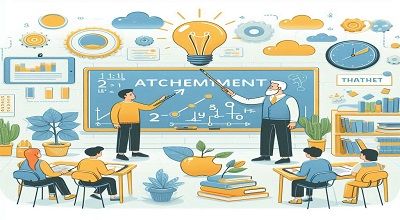The Concept Attainment Model
The Concept Attainment Model is an instructional strategy that focuses on helping students understand and identify concepts through a process of comparing and contrasting examples and non-examples. Here’s a step-by-step guide on how to teach with the Concept Attainment Model:
Select the Concept:
Choose the specific concept you want to teach. Ensure that the concept is clear, well-defined, and suitable for the age and grade level of your students.
Gather Examples and Non-Examples:
Collect a set of examples that illustrate the concept and a set of non-examples that do not represent the concept. Make sure the examples and non-examples are diverse and relevant to the students’ experiences.
Create a Hypothesis:
Develop a hypothesis or rule that describes the characteristics of the concept based on your examples and non-examples. This rule should be something students can use to distinguish between examples and non-examples.
Present Examples and Non-Examples:
Introduce the concept by presenting a few examples and non-examples without revealing the rule or hypothesis. Use a variety of engaging and relevant examples to capture students’ attention.
Encourage Observation and Comparison:
Ask students to observe and compare the examples and non-examples. Encourage them to identify patterns, similarities, and differences. This phase is crucial for developing critical thinking skills.
Elicit Hypotheses:
Prompt students to generate hypotheses or rules based on their observations. Encourage class discussion and ask questions that guide students toward understanding the underlying concept.
Provide Feedback:
After students have shared their hypotheses, provide feedback and guide them toward refining their understanding. Discuss the accuracy of each hypothesis and help students adjust their thinking if needed.
Introduce the Conceptual Rule:
Once students have had the opportunity to explore and refine their hypotheses, introduce the conceptual rule or hypothesis that defines the concept. Compare it with the students’ ideas and discuss any discrepancies.
Practice and Application:
Reinforce the concept by providing additional examples and non-examples for practice. Encourage students to apply the rules they’ve learned to new situations.
Reflect and Review:
Conclude the lesson with a reflection on the concept attainment process. Discuss how students’ understanding has evolved and address any lingering questions or misconceptions.
Extend Learning:
Reinforce the concept in subsequent lessons and provide opportunities for students to apply the concept in different contexts. This could include activities, discussions, or projects related to the concept.
Assessment:
Evaluate students’ understanding through assessments that gauge their ability to apply the concept. This could include quizzes, projects, or other assessments that require the application of the learned concept.
Finally, adapt these steps based on the age, grade level, and specific needs of your students. Flexibility and responsiveness to students’ understanding are key components of effective teaching with the Concept Attainment Model.
